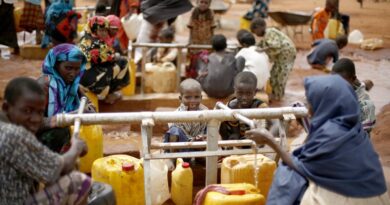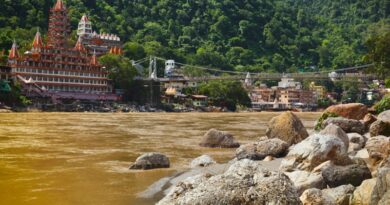Global conflicts over water resources see sharp uptick in 2023

There has been a sharp rise in conflicts over water resources during recent years across the world, including events like attacks on water systems, unrest and disputes over the control of and access to water, and the use of water as a weapon of war, research by global water think tank Pacific Institute in California, USA, has revealed.
The number of water conflicts during 2023 increased by about 50 per cent compared to 2022, with 347 incidents reported in 2023 against 231 in 2022. The number of conflicts in 2022, in turn, was 89 per cent higher than in 2021 (231 against 122).
According to the latest update to its Water Conflict Chronology, the world’s most comprehensive open-source database on water-related violence which was initiated in the 1980s, the Pacific Institute said the 2023 data shows that water was a trigger for conflict in 39 per cent of the cases, while it was a casualty of conflict in 50 per cent of the incidents, and it was used directly as a weapon in a conflict in 11 per cent of the reported incidents. “What is also notable is that the number of subnational conflicts is much larger than the number of interstate conflicts: 62 per cent of conflicts took place within national borders as against 38 per cent between states”.
The significant upswing in violence over water resources reflects continuing disputes over control and access to scarce water resources, the importance of water for modern society, and growing pressures on water due to population growth and extreme climate change.
The Pacific institute noted that the total number of events per year has been increasing rapidly in recent years. This trend is accelerating despite a 2010 UN Resolution that explicitly recognized the essential human right to water and sanitation. Extreme weather — including drought and flooding — due to a changing climate is further straining the water systems around the world.
All three categories (trigger, casualty, weapon) are increasing over time, with a sharp uptick year over year over the past decade. The year 2023 saw a particular increase of water violence in Israel/Palestine/Lebanon (95 events), India (25 events), Mexico (18 events) and a slight decrease only in Eastern Europe (Ukraine/Russia) (32 in 2023 versus 43 in 2022). A large increase in events in India and Latin America associated with drought and disputes over control and access to water, it said.
“The significant upswing in violence over water resources reflects continuing disputes over control and access to scarce water resources, the importance of water for modern society, growing pressures on water due to population growth and extreme climate change, and ongoing attacks on water systems where war and violence are widespread, especially in the Middle East and Ukraine,” said Dr Peter Gleick, Senior Fellow and co-founder of the Pacific Institute.
The Pacific Institute report said key examples of conflicts over water in India included when on November 30, hundreds of police from Andhra Pradesh
clash with Telangana state police forces guarding the Nagarjunasagar dam on Krishna River in a long-standing dispute over water sharing and releases of irrigation water. “Widespread clashes and protests are also reported in a dispute between Karnataka and Tamil Nadu over access to and control of Cauvery River water. In mob and caste violence several people assaulted and killed a man from the Dalit community in Uttar Pradesh for using a public tap to drink water”.
In Uttar Pradesh, violence over access to irrigation water and water infrastructure led to several deaths. Numerous reports of violence over access to irrigation water were reported in neighbouring Pakistan.
“It is urgent that we work to reduce the threat of water-related violence. The best ways to do this are to move to more resilient and effective water policies that guarantee safe water and sanitation for everyone, strengthen and enforce international agreements and laws over shared water resources, and address the growing threats posed by extreme droughts and floods worsened by climate change,” said Gleick. “Solutions are available, but to date they have been insufficiently applied.”



